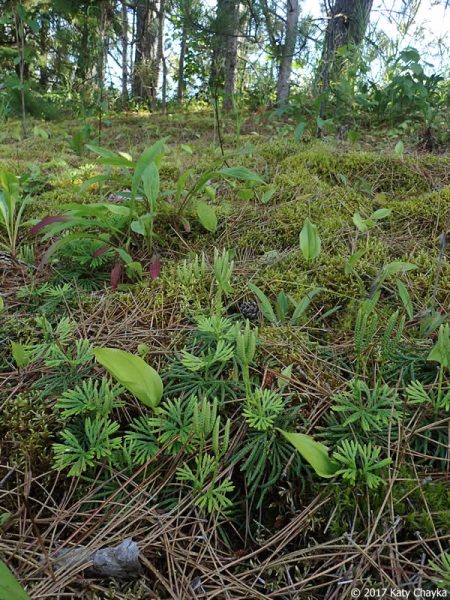Not many things are still green these days in Minnesota, but this plant and family is one of them. Standing 6-20 inches, and maybe just above the snow, is the fan ground-cedar (Diphasiastrum digitatum), clubmoss, or princess pine from the family Lycopodiaceae. And while it looks like the sapling of a pine tree or some sort of cedar, the fan ground-cedar is more related to the ferns than it is to any conifer. As such, it releases spores from cone-like structures called strobli that are visible throughout winter. Before flowering plants arrived on Earth, millions of years ago, this group of plants grew the size of trees. Princess pines are now relegated to smaller sizes, often little more than a foot tall, and crawl along the forest floor and sometimes even up the bottoms of trees. Their leaves either form scales, like the Arb’s fan ground-cedar, or needles like those on the running clubmoss (to learn more: visit minnesotawildflowers.info).
These sweet little plants used to be grouped into one genus: Lycopodium. Now, Minnesota Wildflowers identifies at least thirteen species within the state within the family Lycopodiaceae. More research is being done to identify the range of the species we know and whether more species exist. The princess pine has been used in medicine and in food across the world. In a more recent fashion, the plant’s populations were dramatically reduced due to their popularity in wreaths. Princess pines are slow growing, but these plants are coming back to forests and fields across the country. Look for them there in the Arb, creeping across the ground.










